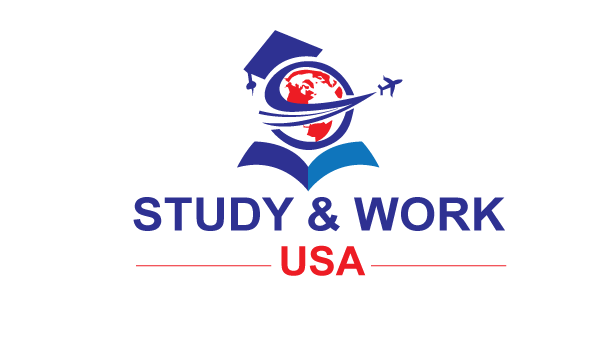How to Write a Winning US Resume and LinkedIn Profile as a Kenyan Graduate
The job application process in the United States uses two primary documents: the Resume and the LinkedIn profile. As a Kenyan graduate, your familiar Curriculum Vitae (CV) is a comprehensive document, but the American Resume is a concise, achievement-focused marketing tool with entirely different rules.
Here is your guide to transforming your professional narrative to capture the attention of U.S. recruiters and Applicant Tracking Systems (ATS).
1. The Critical Shift: From CV to US Resume
The Kenyan CV and the American Resume serve different functions, and failure to adapt can lead to immediate rejection by an ATS or a hiring manager.
| Feature | Kenyan CV Norm | US Resume Requirement |
|---|---|---|
| Length | Typically 2+ pages, comprehensive. | 1 Page Maximum (for most entry/mid-level roles). |
| Personal Info | Often includes photo, marital status, nationality, and references. | Exclude ALL personal data (photo, age, gender, marital status, etc.) to comply with anti-discrimination laws. |
| Content Focus | Duties, responsibilities, and detailed history. | Quantifiable Achievements and impact specific to the job. |
| References | Listed directly at the end of the document. | State: “References furnished upon request.” (Do not list names). |
Rule of Thumb: Your US Resume must be a targeted, brief summary of your most relevant impact, not a life history.
2. Crafting the Perfect US Resume (The 1-Page Rule)
A successful U.S. resume gets past the ATS software and holds a recruiter’s attention for the initial 6–8 seconds they spend scanning it.
A. Format and Structure
- Contact Information: Name, US Phone Number (or future US number placeholder), professional email, and your customized LinkedIn URL. Omit your home address, but include City and State (e.g., Nairobi, Kenya, or your US city if already located there).
- Summary/Profile: A brief (3–4 line) professional statement highlighting your top skills, years of experience, and career goal, rich with keywords from the job description.
- Experience: List in reverse chronological order (most recent first). This is the most crucial section.
- Education: Include your university, degree, and graduation date. If your Kenyan institution is not globally well-known, consider adding a brief context line. Omit high school.
- Skills: Organize into technical/hard skills (e.g., Python, SQL, Salesforce) and soft skills (e.g., Cross-Cultural Communication, Team Leadership).
B. The Action Verb & Quantify Formula
Recruiters look for evidence of results. Every bullet point in your Experience section must use this formula:Action Verb+Task/Project+Quantifiable Result
| Weak (Duties) | Strong (Achievements) |
|---|---|
| Responsible for managing social media accounts. | Drove social media engagement, increasing follower count by 25% over 6 months using targeted content strategy. |
| Helped manage a project for a client. | Coordinated a $10,000 project involving 5 team members, delivering it 2 weeks ahead of schedule and 10% under budget. |
Always start with strong action verbs (e.g., Developed, Managed, Led, Streamlined, Launched, Optimized, Analyzed).
3. Building Your Digital Identity: The Winning LinkedIn Profile
LinkedIn is your online resume and your primary tool for networking and job discovery in the U.S. market.
A. The Professional Visuals
- Photo: Use a high-quality, professional headshot against a plain background. Dress as you would for an interview.
- Custom URL: Change the random numbers in your profile URL to your name (e.g.,
linkedin.com/in/yourname).
B. Keyword Optimization
- Headline: This is searchable. Don’t just list your current title. Use keywords that describe your target role and value proposition.
- Weak: Recent Graduate, University of Nairobi
- Strong: Aspiring Data Analyst | Skilled in Python, SQL, and Predictive Modeling | Seeking Entry-Level Roles in NYC.
- About Section (Summary): Use the first person (I, my). Tell your professional story, mention your Kenyan background as a strength (cross-cultural skills!), and list your top hard skills and quantifiable achievements from your resume. End with a call to action, inviting recruiters to connect.
C. Showcasing Experience
- Translate your roles using universally recognized industry terms. Ensure the experience section mirrors your resume but with richer detail.
- Showcase Cross-Cultural Skills: Use the ‘Skills’ and ‘Experience’ sections to explicitly list: Global Market Analysis, Cross-Cultural Communication, Swahili/English Bilingualism, etc. These are major assets in a diverse US workplace.
Ready to Win?
Transitioning from the Kenyan CV mindset to the US Resume standard is a learning process, but it’s essential for getting past the initial screening stages. Focus on quantifying your impact, adhering to the one-page limit, and perfecting your digital presence on LinkedIn.
Need a U.S. Resume expert to review your draft and ensure you pass the ATS with flying colors?
Contact StudyAndWorkUSA.com to book your personalized resume and LinkedIn consultation!
Understanding the distinction between a Curriculum Vitae and a Resume is crucial, and this video provides a detailed breakdown of which document to use and when: CV vs Resume What’s the Difference & When to Use Each.


